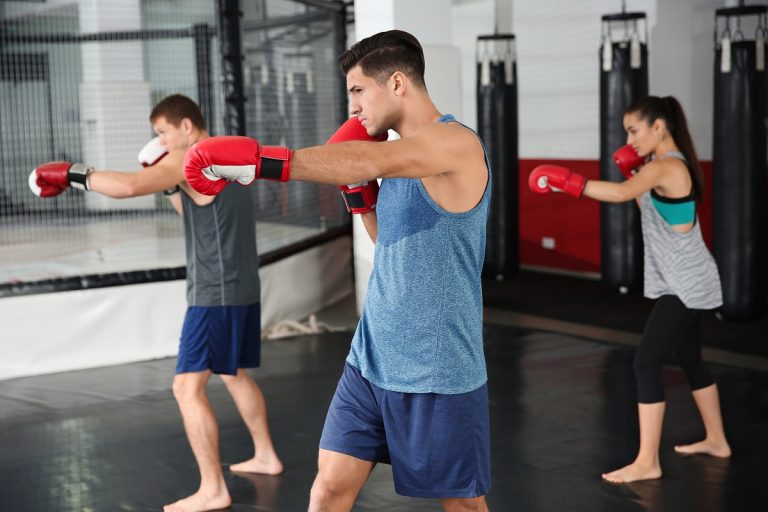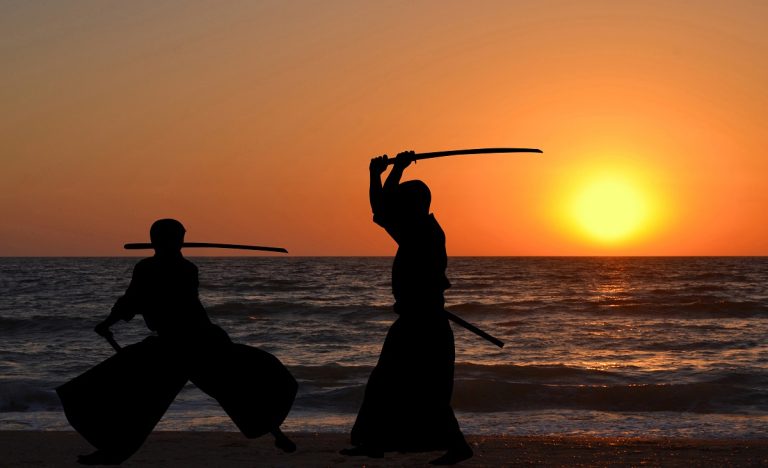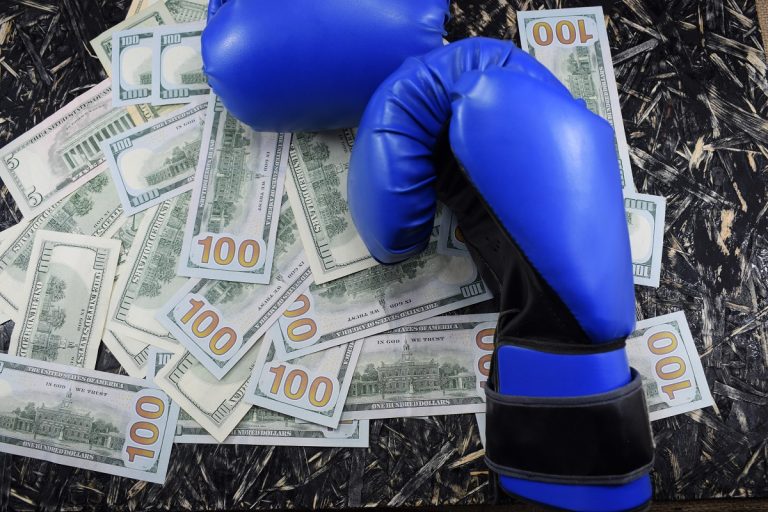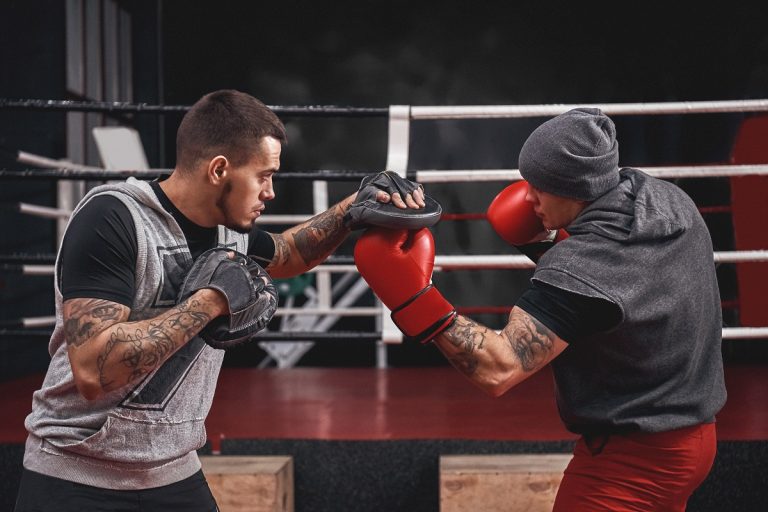How to Wrap Hands for Boxing: Step by Step Guide with Video Help!
Learning how to wrap hands for boxing is a key skill. The correct wrapping has some great advantages… while incorrect wrapping can actually damage your hands and lead to injury.
So, this short guide will give you the best method for wrapping your hands. We’ve got a video to show you a visual demonstration, as well as written instructions in case you’re unable to watch a clip right now.
To further explain why wrapping your hands for boxing is a common practice, scroll down to our FAQs at the end!
How to Wrap Your Hands for Boxing
This is our favorite method for wrapping hands for boxing. It provides protection, tightens your fist (more on why this is so important below), and shows you how to use up leftover wrap if your hands are a little too small!
Watch the video above for a visual demonstration. Then, read the steps below to go through the process slowly:
1. Correctly Placing the Loop
To start wrapping, it’s actually easier to have your wrap cloth wound up. This makes it easier to pass around your hand, so roll up your wrap if it isn’t already rolled. You want the Velcro end to be at the center, and the loop to be free at the end.
Now, with your hand held flat, place your thumb through the loop and let the long end of the wrap trail over the back of your hand.
Starting the wrap on the back of the hand ensures that the wrap will tighten up when you make a fist. If you loop the thumb but pull the wrap toward the center of your palm, it will loosen as you move your hand around.
2. Wrist Wrap
The next step is to wrap 3 times around your wrist. Pass the wrap over the back of your hand, across the inside of your wrist, and back to the other side of your thumb again – that’s one pass.

3. Hand Wrap
Next, wrap 3 times around your hand – the wrap will pass across the outer edge of your hand (between the pinkie and wrist), then across the upper part of your palm, and through the gap between your thumb and pointer finger.

At the end of the third wrap around your hand, make sure that the wrap is in the starting position below your thumb again.
4. Crossing Through Fingers
This next step is a little hard to explain with words, so if you haven’t already watched our video above, go do that now!
Pass the wrap (which should be in the starting position below your thumb) across the back of your hand and between your pinky and ring fingers. Pull the wrap across the top of your inner palm so it’s coming out above the thumb – just like the hand wrap step above.

Once you’ve made that cross pictured above, just pull the wrap over your palm so that it’s in the starting position below the thumb again.
Repeat this for the gaps between each finger – pass through the gap, across the upper palm, above the thumb, and across the back of the hand to make a cross.
5. Thumb Wrap
With the wrap back in the starting position, simply wrap around the thumb and pull across the back of the hand.
Then flip your hand over so the palm is facing you and wrap around the thumb from this side too.

6. Knuckle Wrap
With your thumb wrapped, simply pull the wrap across the inside of your palm so it’s coming out between your pinkie and wrist again. Flip your hand over so the back is facing upward.

This doesn’t actually protect your knuckles (learn more about why below) but it does create a solid surface for punching.
7. Finishing Up
Depending on the size of your hands, you might have only a little wrap left or a lot. As you need to reach the end of your wrap for the Velcro to secure it, you may need to do some more wrapping.

When you reach the end of the wrap, simply tuck or secure it in place.
3 Reasons Correct Wrapping is Important
So, why go to such lengths to wrap your hands before boxing? Here are 3 very good reasons to take the time to wrap correctly!
1 – No Damage to Fingers or Knuckles
While it’s true that the wrap doesn’t provide any padding or lessen the impact you’ll experience from punching, it can still provide some protection for the delicate areas of your knuckles and fingers.
The wrap holds everything tightly in place, so knuckles and fingers won’t shift about upon impact.
With boxing, it’s important to wear gloves. Boxing gloves are padded across the knuckle area especially, to prevent the most damage to your hands. Wrapping alone is not enough.
2 – Keep Your Wrists Aligned
The wrap aligns your wrist with your knuckles correctly, preventing damage here. It also gives you more power and confidence to punch without restraint, as you know that you will land straight and effectively.
This is also why you should wear wraps whenever you train, not just for sparring. Training yourself to punch hard and not hold back requires wraps.
3 – Protect Skin Damage
The wrap absorbs and spreads the vibrations experienced when you land a punch. It also protects your skin from splitting and cracking on impact.
Importantly, the wrap protects the palm of your hand too. You might think that only the knuckles and wrist need protection, but the palm of your hand can be damaged by your fingers (and nails) from a tightly formed fist.
The wrap really does protect your hands from every angle and create a solid, strong punch.
Summary – Get Wrapping!
Wrapping your hands provides some protection and is a key piece of equipment for sparring and training. It protects your hands from impact vibrations and keeps your wrist aligned.
The wrap will also ensure that your fist forms a solid, strong shape that can inflict more damage without receiving damage too.
There are multiple ways to wrap your hands for boxing and your trainer or gym buddies may have a different approach to the one we used above. That’s okay. Just find a wrap method that adequately protects your hands and feels comfortable.
Also Read:
- Why Do Boxers Wear Robes? (With 6 Famous Examples)
- MMA vs Boxing: Differences And Similarities (Popularity, Stance, Gloves, Street Fight, Self Defense)
- Do Boxing Gloves Do More Damage? (Compared To Bare Fists, Open Hands, And Other Striking Techniques)
- Do Boxers Lift Weight? (Is It a Beneficial and Standard Practice?)
FAQs
How to wrap your hands for boxing without the starting loop?
If your tape or gauze doesn’t have a loop for your thumb, it’s better to start with multiple wraps around your knuckles to really secure the end down. Then loop around and cross through the fingers, ending with the thumb and wrist wraps as shown above.
Can I wear boxing gloves without wrap?
You can, but many people advise against this. The glove will protect your hand to some extent, but it won’t lock your fingers and knuckles together like the wrap will, so you risk some damage from vibrations… as well as an incorrect fist shape or unaligned wrist. There is some debate about this, however.
Do you use different wraps for Muay Thai and Kickboxing?
To some extent, yes. Boxing only punches with the knuckles in a fist shape, while other martial arts can use other parts of the hand (as well as other body parts) to strike. As such, your trainer may recommend a different wrapping style.
What hand wrap is best for boxing?
First, choose between gauze and wrap. The best way to decide is try both – most gyms will have wrap for you to hire or ask a fellow trainer if you can borrow theirs. If you like the feel of wrap, we recommend Everlast or Ringside. Many of the big sports brands also create wraps for boxing. You can find these on Amazon.









